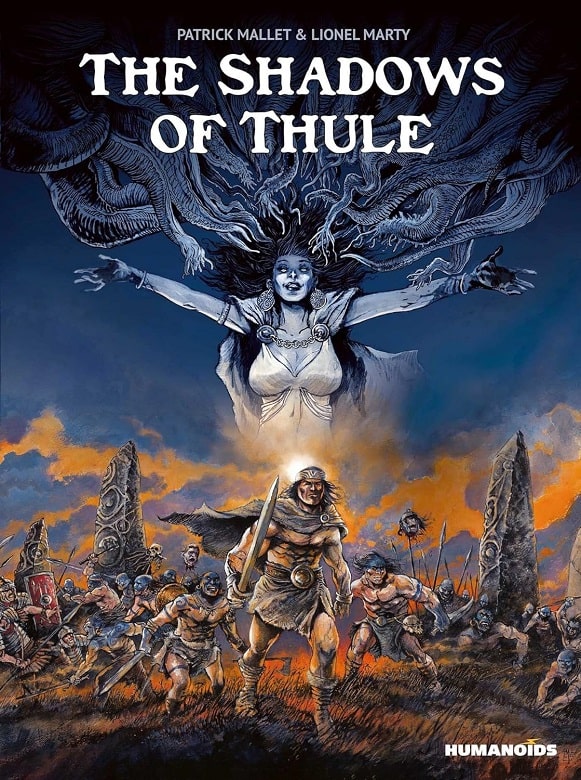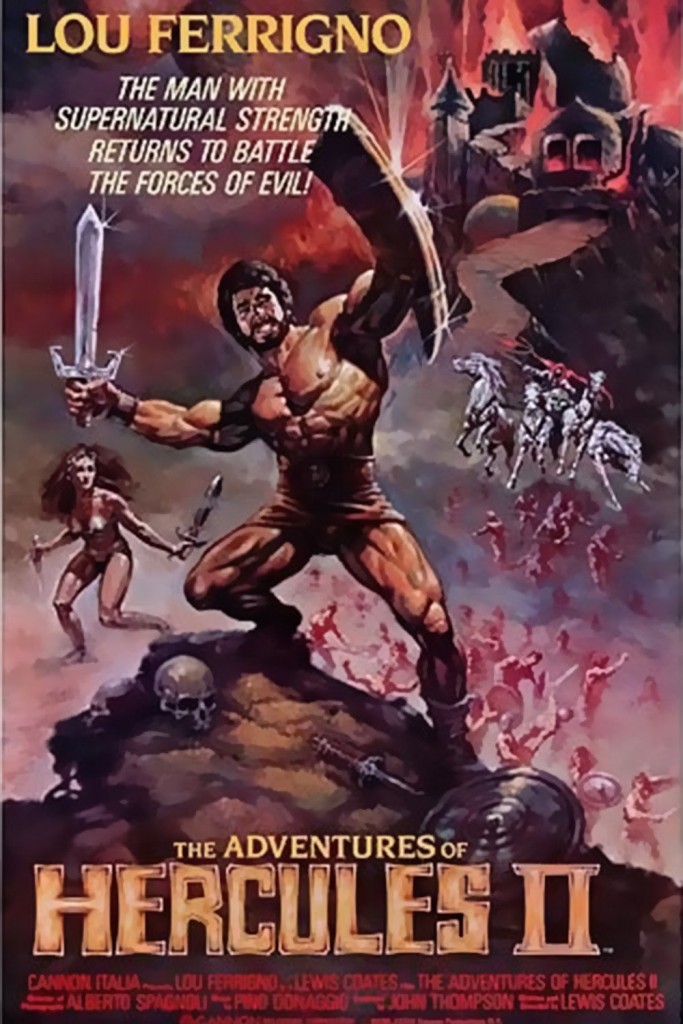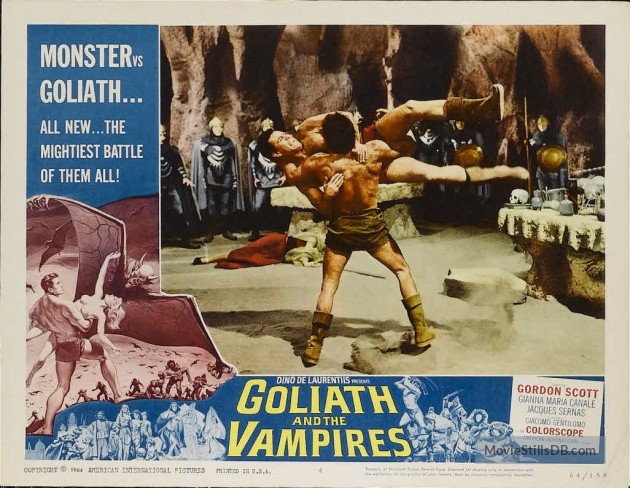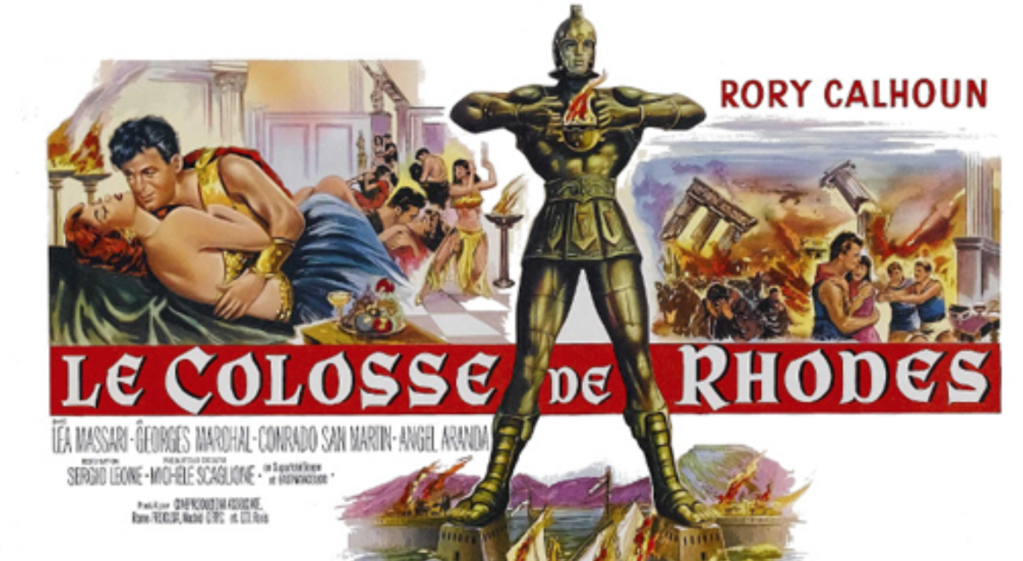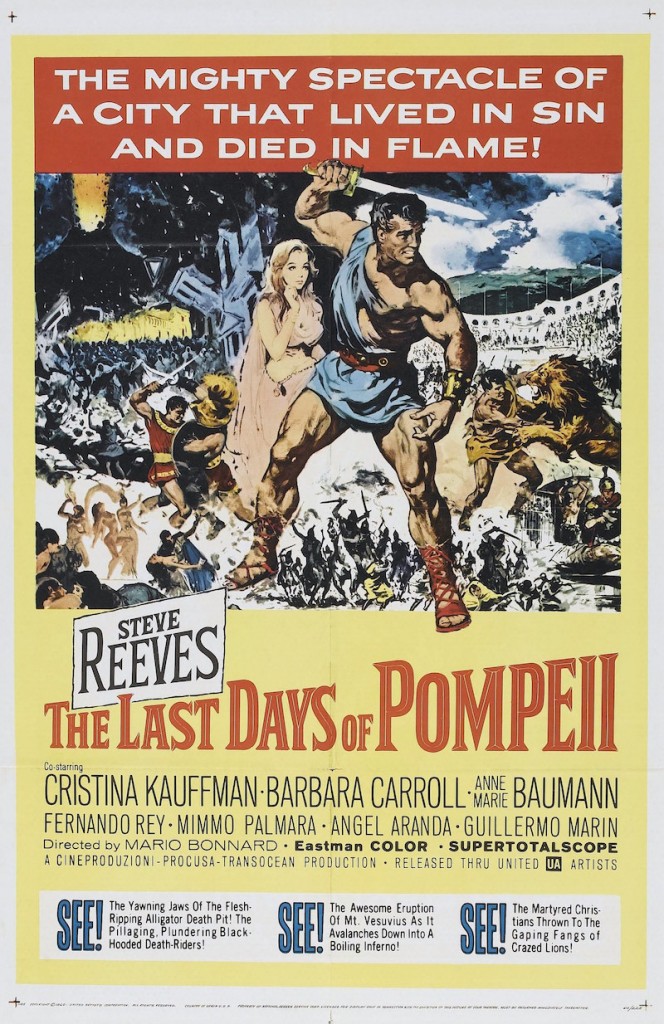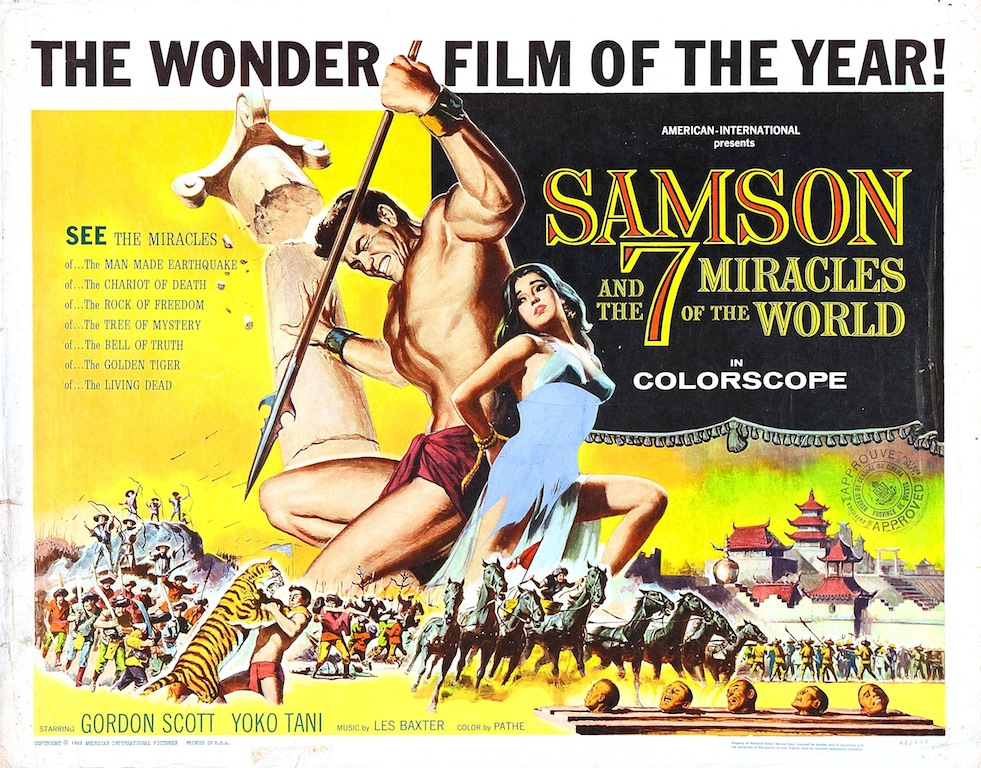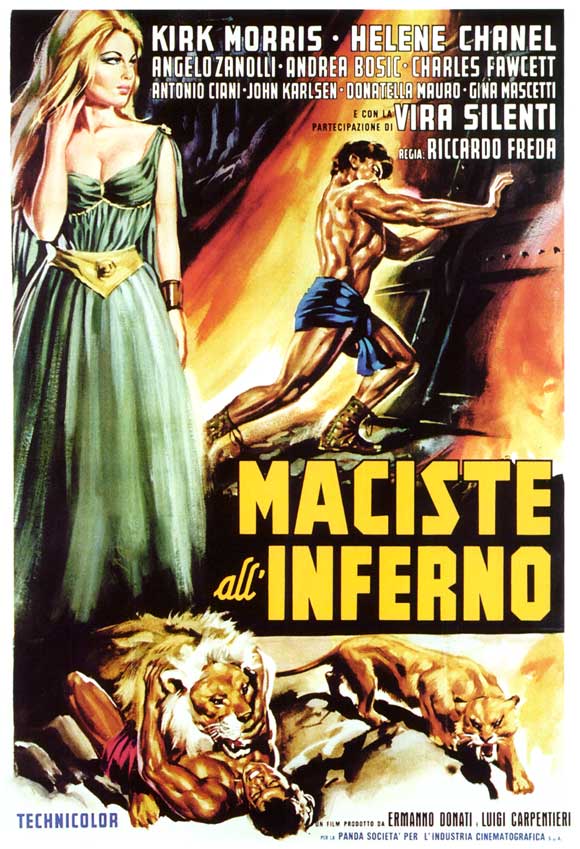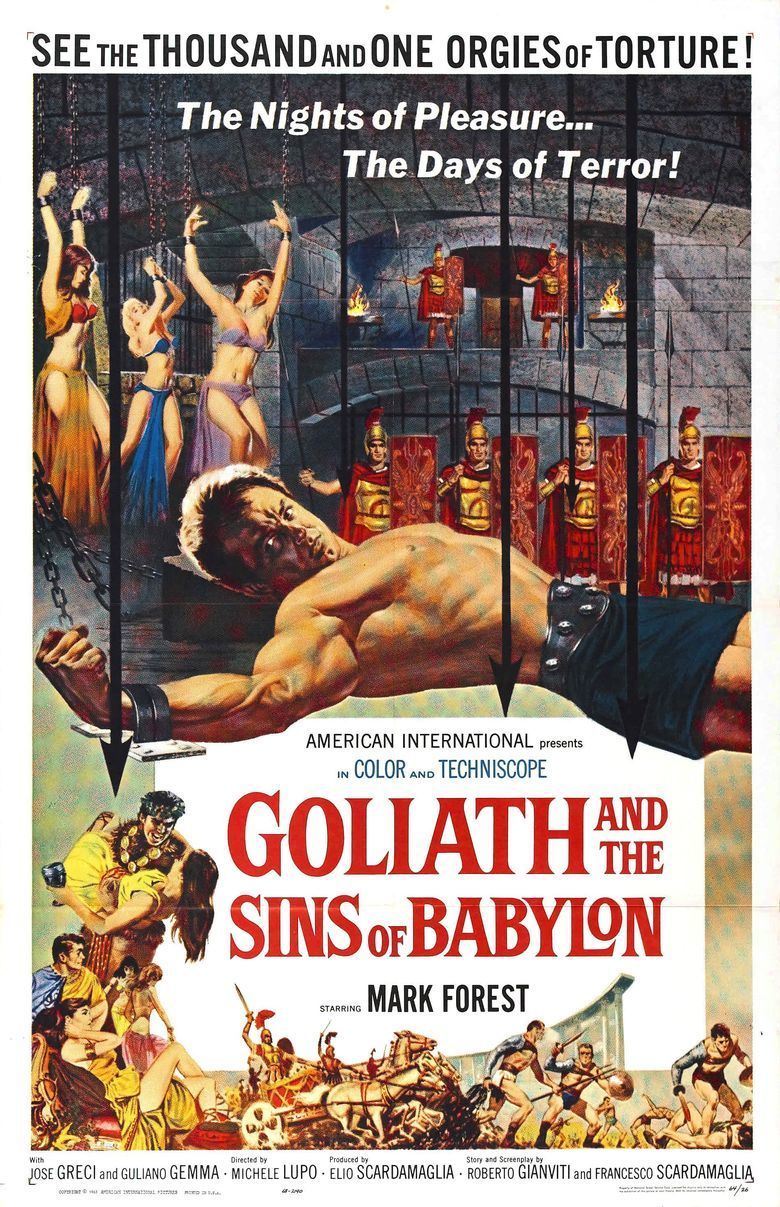 When you have an Italian sword-and-sandal (peplum) film, and the hero of the title has an oblique name like “Goliath” or “Colossus,” the immediate question that comes to mind is, “Is this hero actually Maciste?”
When you have an Italian sword-and-sandal (peplum) film, and the hero of the title has an oblique name like “Goliath” or “Colossus,” the immediate question that comes to mind is, “Is this hero actually Maciste?”
The answer with Goliath and the Sins of Babylon is “Yes.” The Italian title of this 1963 muscleman epic is Maciste l’eroe più grande del mondo, “Maciste, The Greatest Hero in the World.” This isn’t strictly true, because in the rest of the world, Maciste habitually lost his name and was turned into Hercules or Atlas or Colossus … or Goliath.
And Maciste isn’t even in Babylon! This is another deception of the English-language title and dub. The setting is the usual vague Greco-Roman Mediterranean world that served as the backdrop for the majority of peplum flicks, where fictional kingdoms constantly warred with each other until a bulky hero appeared to help the underdogs to victory.
The story of Goliath and the Sins of Babylon isn’t much more complex than that description, although the events of the plot as it lunges from scene to scene create a needless tangle. The short version: The Kingdom of Cafaus (“Babylon”) has forced a cruel treaty on its neighbor, Nephyr, that demands an annual tribute of twenty-four virgins (upped to thirty in the English version). The current king of Nephyr, Pergasos (Piero Lulli), arranged for this awful treaty so he could keep the throne after his brother’s death. The wandering strongman Maciste (Mark Forest) arrives in Nephyr and befriends a group of rebel gladiators who plot to free the city from the grip of the king of Cafaus and his wicked agent, Morakeb (Erno Crisa), and place Regia (José Greci), daughter of the previous king, onto the throne of Nephyr.
Between the lines of this story is a naval battle, a chariot race, copious sword fights and wrestling moves, a populist uprising, a pitched battle between armies on horseback, a rush of lions and leopards mauling everybody in sight, comic antics with a dwarf, and jarring shifts in the story that can make it tricky to follow the specifics. There’s a lot packed into this movie, including chunks of other movies, which makes for a choppy narrative and moments of, “Wait, who is this guy again?”
…
Read More Read More

